
views
Please note: This article is targeted at countries where driving takes place on the right. For countries where driving takes place on the left, the words 'right' and 'left' will have to be interchanged.
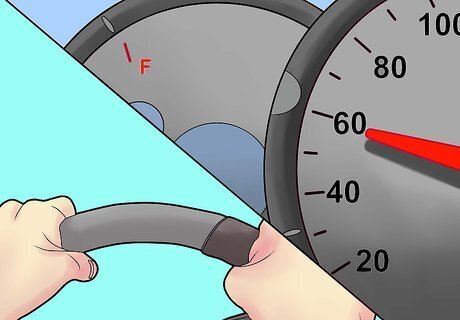
Drive consistently. Don't speed up and slow down for no reason, don't make one turn fast and the next slow. Consistent driving, whether more aggressive or less, is the best way to allow other drivers to accurately predict what you're going to do next. Additionally drive consistent to the surrounding traffic. By driving inconsistently, you risk the general safety of others around you and you may also risk getting cited for one of many traffic violations. Recognize that everything works best when traffic flows in a natural, balanced, and predictable way. This is the single most important concept behind not annoying other drivers.
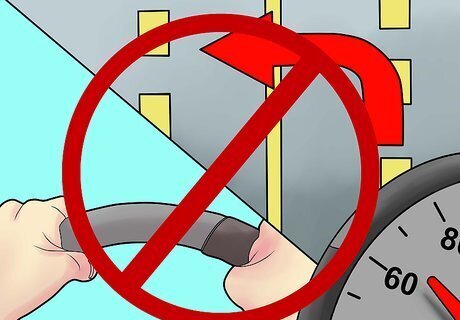
Don't impede other traffic. For example, if you are on a U.S. Interstate Highway with a speed limit of 65 mph (105 km/h), and the majority of traffic is averaging about 70, don't impede them by driving in the far left lane at 65 mph (105 km/h). Either match their speed or get over to the right lane and get out of their way. Beware if you attempt to match their speed, you risk at least getting a traffic ticket for speeding and the officer is not likely going to accept the excuse that you were "just keeping speed with traffic", especially if you're the lead car. But this does not mean you should endanger yourself by slowing them down and risking a collision. In general, you should drive at or close to the speed limit unless conditions demand that all drivers slow down.
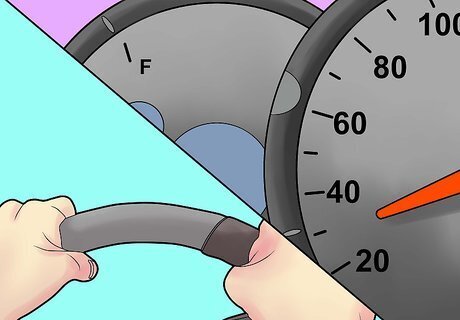
When you must drive more slowly than others (looking for an address or when your vehicle is having mechanical difficulty), consider turning on the indicator which is on the side of oncoming traffic. However, beware that turning on your hazard indicator while your vehicle is moving is unsafe and illegal in some places. If passing is difficult and you're holding up traffic, pull over from time to time to let others get by. They'll thank you for it (or at least will no longer be annoyed).
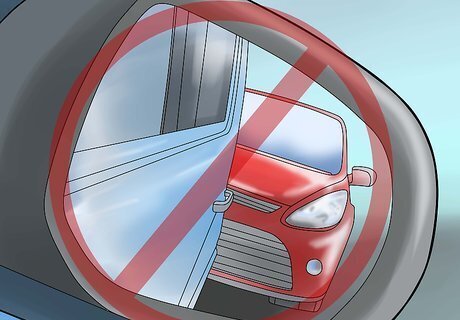
Don't tailgate. Ever. It's completely unnecessary, highly annoying and quite dangerous. Some people will have a psychological reaction to tailgating that will cause them to slow down, and some people will do it just to be mean. In fact, the DMV actually recommends slowing down if being tailgated so as to create a space cushion in case of emergency. If the vehicle in front is traveling slowly in the passing lane, be patient. Do not flash your headlights while tailgating as this is viewed by many drivers as an act of aggressive driving and very rude. In certain areas of the United States, aggressive actions such as these are monitored by surveillance cameras and ticketed accordingly. If you have legitimate need to pass and there is only one lane per direction of traffic (i.e. the vehicle in front is going at an excessively slow speed and there is slightly heavy oncoming traffic) and you cannot pass naturally, back off to a safe distance (if you aren't already) and briefly flash your lights (no more than twice should be sufficient). At this point, the driver in the vehicle ahead may understand your intentions better and pull off slightly to allow you to pass with greater ease, if not just continue attempting to pass naturally while not tailgating. If you find yourself catching up to vehicles ahead of you continually, then you're probably going too fast relative to traffic around you.
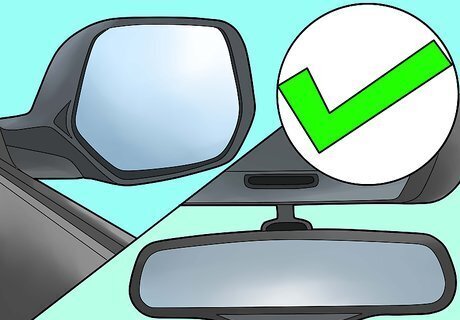
Always check your mirrors and your blind spot before passing as there may be someone else behind you driving at a much higher speed. Should this be the case, let them pass you first. Once they have passed you, continue to pass the other vehicle as planned should conditions allow you to both pass. Always drive sufficiently faster than the vehicle you overtake and return to the right lane as soon as possible. Semi trucks have much bigger blind spots. You might think the driver can see you but his vision may be obstructed as the drivers can only use their mirrors to see others on the road.
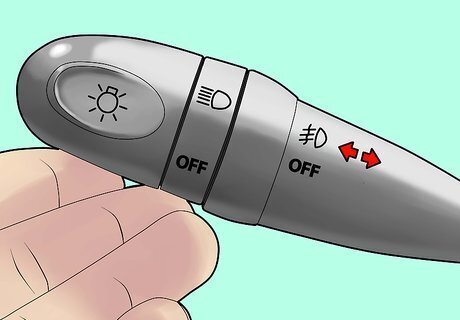
Use your turn signal lights to signal your intentions to other drivers so your actions don't come as a surprise. Failing to do so can be a source of serious aggravation to other drivers. Signal before you turn, change lanes, merge, or exit the freeway...every time, even when you don't think it's necessary. If you're on a fast moving road with a fair amount of traffic, turn on your signal much sooner, to let other drivers know you are turning, and to give them ample time to pass. If you're making a left turn at an intersection, the drivers behind you will appreciate advance warning. If you need to slow down to make a turn or pull over, use your turn signal before pressing the brake pedal. This will give other drivers advance notice that you'll be slowing down soon. When you're finished making your turn or lane change, make sure your turn signal is off. If someone is performing a reasonable merge or lane change in front of you (timely and using a turn signal), let them in.
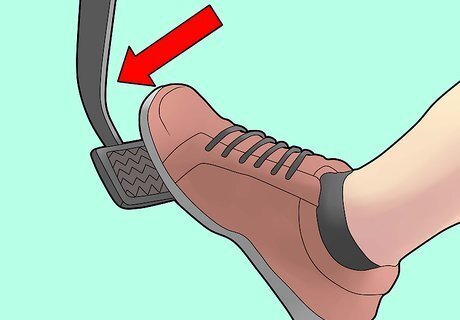
When you need to use the brake to slow down, put your foot on it and decelerate smoothly. Frequent tapping of the brake pedal will make drivers around you unsure of whether you're actually stopping. On the other hand, don't brake at the absolute last possible second. Give drivers behind you plenty of time to notice that you're braking and to do likewise. A good time to start braking is when you notice the car in front of the one you're following braking.
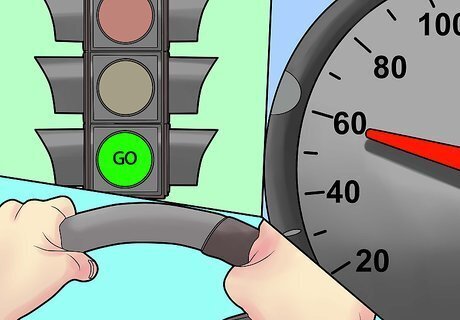
Accelerate with purpose. This is not to say you should floor the gas and take off like mad. Just don't dawdle, especially when the light turns green, or when it's your turn at the stop sign. When you are changing lanes, do not slow down unless traffic demands it. In fact, speed up a little bit.
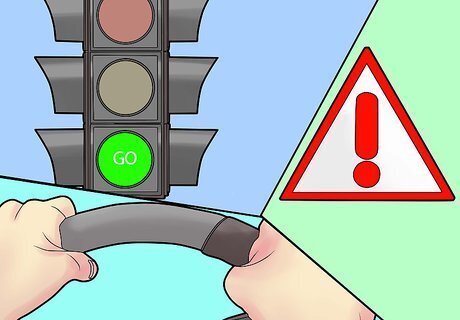
When pulling into moving traffic, time your move carefully and accelerate quickly so you don't force oncoming drivers to hit their brakes. Be patient and wait for a big opening, then hit it! If the traffic is moving at 60 mph (97 km/h) and it takes you a leisurely 30 seconds to get up to speed, you'll need almost half a mile of empty highway to avoid endangering or irritating other drivers.

Stop at the stop line, especially at intersections with traffic lights. Stopping well short of the line can be confusing to other drivers - is that vehicle stopped for the light or has it broken down? - and you may fail to trigger the sensors that change the traffic lights. Stopping beyond the line won't get you to your destination much faster but it will interfere with other vehicles, especially those trying to turn left onto your street.
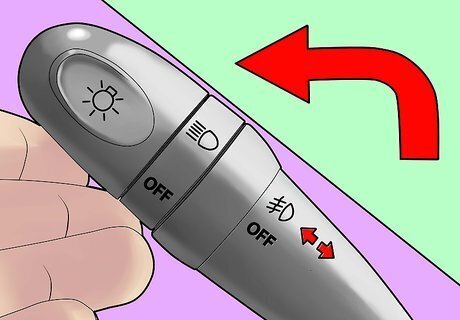
When you are moving into a turn lane in preparation for making a turn, signal your intention, change into the turn lane, then slow down - in that order. If there are multiple turn lanes, pick one and stay in it all the way throughout the turn. Drifting into an adjacent lane is likely to force another driver to take evasive action.
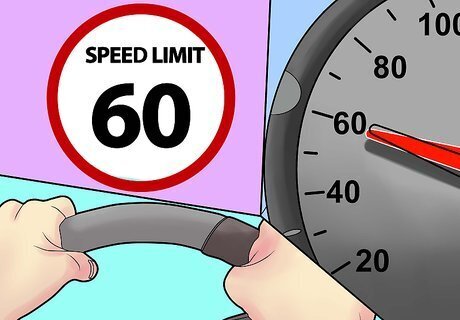
When driving at speeds under the limit, try to drive as close to the limit as possible., unless conditions demand otherwise (i.e. that all drivers slow down due to heavy traffic, inclement weather, etc. or speed up due to traffic flow, improved weather conditions, etc). Even if there are passing lanes, stay close to the speed of other vehicles unless there is a real need to go slower. When you must drive more slowly than others (looking for an address or when your vehicle is having mechanical difficulty), use your hazard flashers. If passing is difficult and you're holding up traffic, pull over from time to time to let others get by. They'll thank you for it.
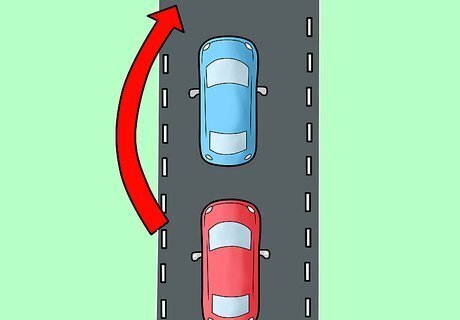
If there is more than one clear lane and you are in the right lane behind someone going a few miles under the limit, do not honk or speed by and cut them off to make a point that they are going too slow. The speed limit is technically an upper limit, and people are not required to drive any faster. If you need to go as fast or faster than the limit, pass when it is safe to do so.

When driving on a multi-lane road, do not block other traffic by driving right next to another vehicle at the same speed. Not only does this prevent faster traffic from flowing past, the driver next to you will be continuously distracted by your vehicle in the corner of their eye. This problem is happening more and more because some drivers don't understand how to pass properly while driving on cruise control. If you are about to pass another vehicle while on cruise, and your speed is just barely faster, gently depress the accelerator to slightly increase your speed temporarily so the pass is completed in a reasonable amount of time. The shorter the time you are alongside a vehicle you are passing, the safer the pass.
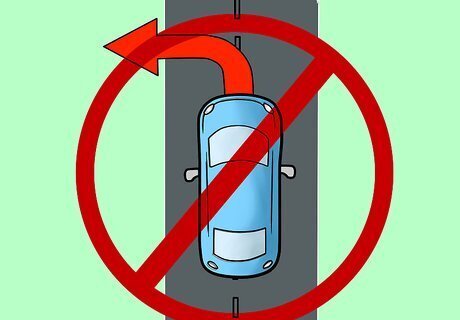
On freeways and Interstates, Do not drive in the left lane continually unless heavy traffic or upcoming turns/exits demand it. It is the passing lane and is not intended for general traffic flow, except in some urban settings. Some states, such as Ohio and Kansas, also have laws which require traffic to "keep right except for passing". If you're in the left lane and driving faster than the vehicles on your right, watch for vehicles driving faster than you coming from behind. Pull over so they too can pass, even if they are speeding (so you are not tailgated); or at least match their speed (within reason) until you can pull over.
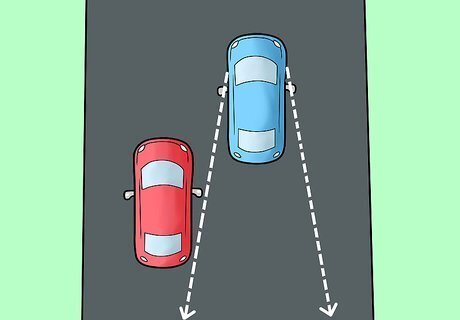
Stay out of the blind spots of other vehicles as much as possible, which are generally the right and left rear corners depending on the vehicle.
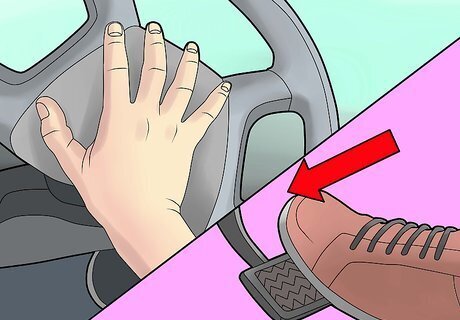
If you inadvertently cause a situation that annoys other drivers, and they honk the horn or indicate their displeasure in some other way, do not gesture wildly, honk your own horn or jam the brakes. Accept your short-lived punishment, indicate to the other driver that you are sorry for your infraction, and move on.
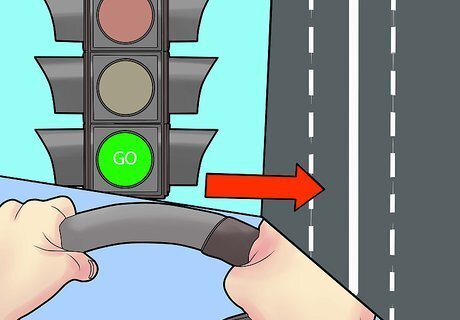
In heavy highway traffic, pick a lane and stay in it, but not the fast lane. Over the course of many miles, all lanes will go approximately the same speed. Excessive lane changing will not get you to your destination any faster, and ultimately only makes traffic run more slowly overall. It also increases your chances of a collision.
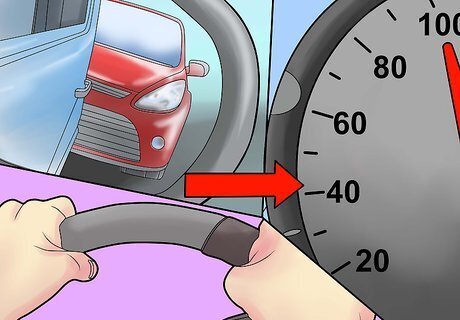
If you are on the freeway and it looks like the vehicle next to you is trying to get over, it probably is because they are trying to get over. Speeding up so they can't get into your lane is just childish, and it may mean you have made them miss their exit. Unless in fact they are switching toward the middle of the freeway. Then it may mean they intend to pass a vehicle in front of them, and may not have seen you. Use caution and allow them to merge if they continue to come into your lane.
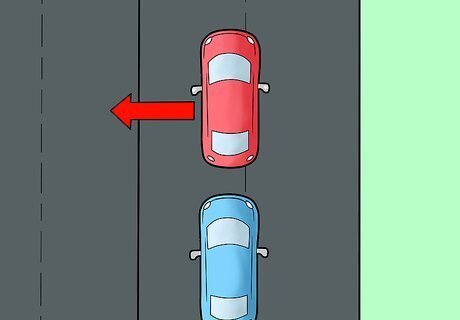
If you are behind someone who is trying to switch lanes, don't try to pass them on that side to crowd them out. A signal to change lanes is not an invitation to pass. Some drivers are very particular about this "rule" and will get over anyway, regardless of whether or not they have room, and it is a good way to rear-end a driver, which would be your fault even if they slam on the brakes as soon as they are in front of you.
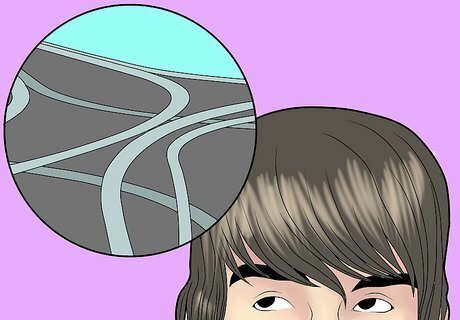
Recognize that highway on-ramps and off-ramps are there so the flow of traffic will not be interrupted. Therefore you do not have to slow down on the freeway to get off - that's what the off-ramp is for. Conversely, the on-ramp gives you enough space to hopefully reach the typical speed limit (usually 55 to 70 miles (89 to 113 km) per hour) so that other drivers on the freeway do not need to slam on their brakes. (Notice that some on- and off-ramps may be poorly designed and thus slowing down or slamming the throttle might be necessary in these cases).
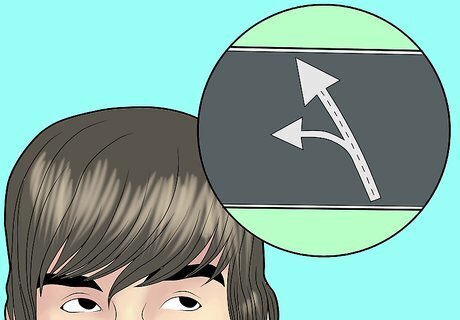
Anticipate highway on-ramp incoming traffic. Pay attention to signs indicating interchanges and on-ramps. If you have the opportunity, safely shift lanes to allow incoming traffic to merge in a clear lane. This will help prevent bottlenecks and backups caused by merging traffic being unable to enter the flow.
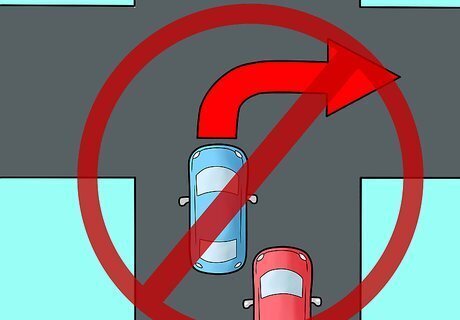
Passing on the right of traffic is very dangerous and also illegal in some places. If you have to pass a vehicle driving below the speed limit in the left (or passing) lane, you have two choices: pass them on the right (which is dangerous and sometimes illegal) or pull back and just drive at the slower speed. Do not tailgate them (see "Don't tailgate" step). Absolutely never pass on the shoulder of the road or blindly when there is the potential for oncoming traffic (i.e. on a state highway with 2-way traffic). This is not only illegal, but could result in you being personally responsible for the death of a pedestrian walking on the side of the road because their vehicle broke down.

Don't drive with your foot on the brake. Ever. Even if you think you're not putting any pressure on the pedal, you may be depressing it enough to trigger the brake lights. In this case, other drivers won't know when you're truly braking. Other possible effects are brake drag, which results in premature brake wear and decreased fuel economy; or you could inadvertently push both brake and throttle in a panic stop, potentially increasing overall stopping distance significantly.




















Comments
0 comment